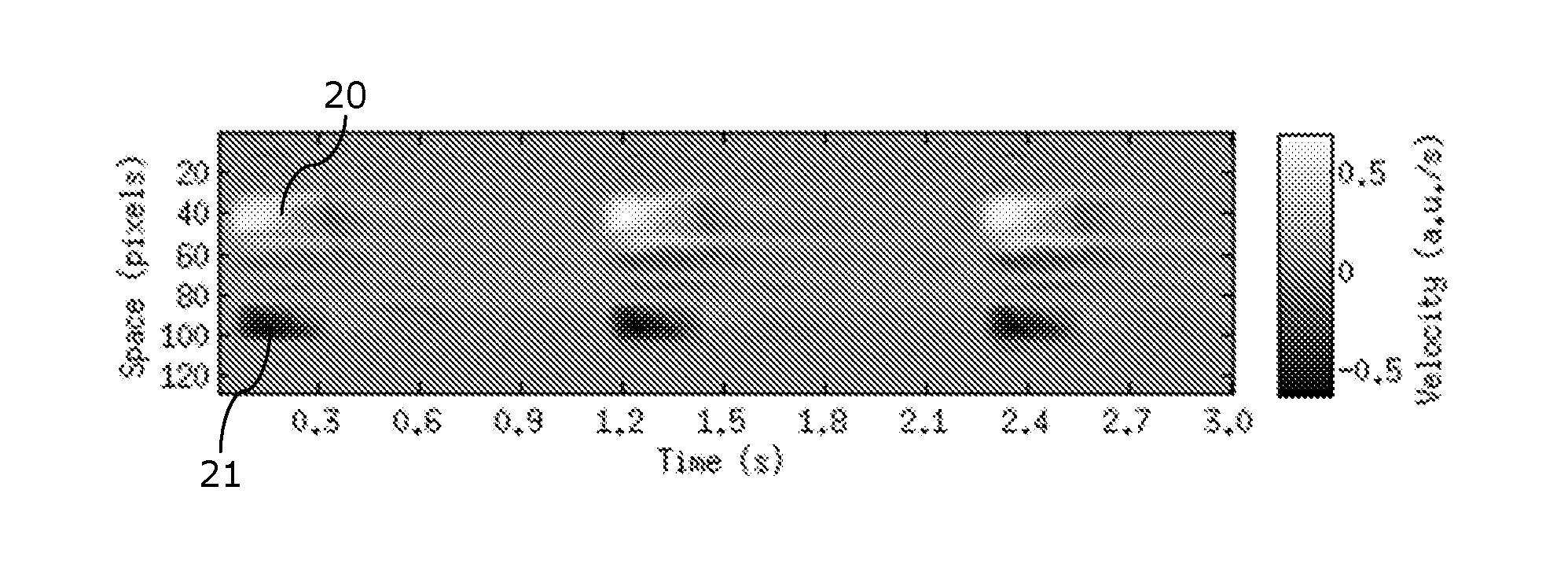Method for determining a personalized cardiac model using a magnetic resonance imaging sequence
a magnetic resonance imaging and cardiac model technology, applied in the field of personalized cardiac models using magnetic resonance imaging sequences, can solve the problems of not being patient-adaptive, moving complex, and affecting the patient's health, so as to improve the prediction of the rest time period and improve the time resolution precision
- Summary
- Abstract
- Description
- Claims
- Application Information
AI Technical Summary
Benefits of technology
Problems solved by technology
Method used
Image
Examples
Embodiment Construction
[0067]With reference to FIG. 1, we will now describe a mode of implementation of the invention which allows the construction of a personalized cardiac model adapted to each subject undergoing Cardiac Magnetic Resonance (CMR).
[0068]The method of the invention comprises a first step 10 of selection of a slice or a scan plane to be used to calibrate the model.
[0069]There for, a Cardiac MRI is performed. It can be done for instance using a 3T Signa HDxt scanner from General Electric®, Waukesha, Wis., with subjects in supine position and using an eight-element cardiac phased-array coil.
[0070]Localizing scans are recorded, and a slice or a scan plane usable for the calibration is located.
[0071]The choice of the scan plane depends on the kind of cardiac model which is to be used. For instance:[0072]a scan plane located at the aorta may be used to obtain a cardiac model with N=2 cardiac phases (systole / diastole);[0073]an intra-cardiac short axis scan plane may be used to obtain a cardiac mo...
PUM
 Login to View More
Login to View More Abstract
Description
Claims
Application Information
 Login to View More
Login to View More - R&D
- Intellectual Property
- Life Sciences
- Materials
- Tech Scout
- Unparalleled Data Quality
- Higher Quality Content
- 60% Fewer Hallucinations
Browse by: Latest US Patents, China's latest patents, Technical Efficacy Thesaurus, Application Domain, Technology Topic, Popular Technical Reports.
© 2025 PatSnap. All rights reserved.Legal|Privacy policy|Modern Slavery Act Transparency Statement|Sitemap|About US| Contact US: help@patsnap.com



